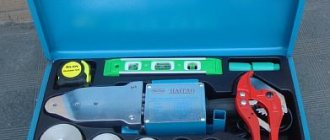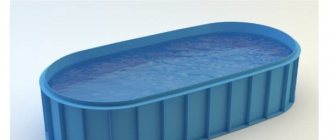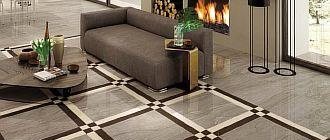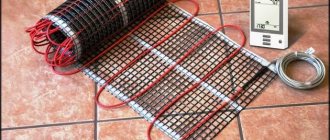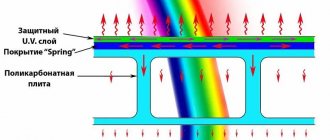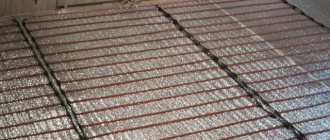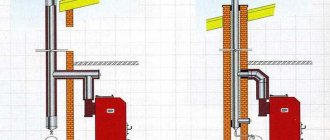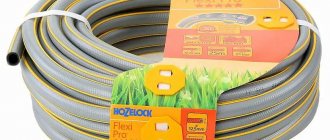| Place | Name | Characteristics in the rating |
| TOP 10 best profile cutters |
| 1 | BISON “MASTER” | The best tool steel |
| 2 | SIBIN 313 | A simple tool at an attractive price |
| 3 | Matrix 87951 | High quality lever system |
| 4 | DEXX 31391 | Best price |
| 5 | STAYER "GRAND" | The most reliable design |
| 6 | Enkor 300mm | Strengthened system |
| 7 | Sibin | A cutter with an enlarged mouth |
| 8 | Bison 3135 | The most convenient one-handed model |
| 9 | Brigadier | Presence of a rotating head |
| 10 | Knipex KN-9042250 | The best choice |
A cutter is a tool that allows you to quickly connect metal profiles to each other without using additional fasteners. The principle of its operation is to punch holes at the joints and simultaneously roll the edges. Thanks to this technique, we get a durable structure for drywall, and the main advantage of such fastening is the speed of construction.
When choosing a cutter for a profile, you should pay attention to the following factors:
- steel quality;
- reliability of the mechanism;
- ergonomics of handles;
- the presence of a lever mechanism, or its absence;
- punch size.
Most aspects are easy to determine by eye, except for the build quality and the steel used. You can’t do this without personal experience or reviews from real users. We also studied them and took them into account when compiling our rating, which included the 10 best models with which you will not experience any inconvenience when working. The TOP included both the most popular manufacturers, who often inflate the price just for their name, and little-known brands from Asia, which are also distinguished by their high quality and compliance with all stated requirements. We will look at both cutters with a reinforced punch and the simplest lever-type tools, which cost less, but are less convenient during operation and force the master to exert increased effort when pressing the levers.
No. 3. Types of construction staplers
Mechanical stapler
The simplest version of a stapler, which is suitable for a home craftsman who uses the tool only from time to time. The main structural elements are: lever, spring and housing. With the help of muscular force, the user compresses the lever, due to which the spring is erected. During expansion, the spring pushes the staple or nail with enough force to pierce the surface.
The main advantages of the solution include:
- a simple design in which there is nothing to break. You will only need to occasionally lubricate the spring with general purpose lubricants;
- complete autonomy. This stapler does not depend on the presence of electricity, has no wires, is always ready for use, and can be used anywhere;
- lightness and compactness;
- reasonable price.
The main disadvantage is that you will have to apply force, and for some it will be difficult. If you have to hammer in dozens of nails or staples, your hand will become very tired. Mechanical tools cannot cope with any material. Professional craftsmen should not take such a stapler (or take it, but in a set with a tool of a different type), but for the household, for rare jobs, such a stapler is exactly what is needed. However, sometimes mechanical staplers are also used in workshops: these are stationary tools, activated by pressing the foot, which greatly facilitates the work.
The body of the stapler can be made of steel (give preference to powder-coated models), light alloys or even shockproof plastic. There is no particular difference - the main thing is that the body is assembled not with rivets, but with screws. In this case, the stapler can be disassembled and cleaned if necessary. It is important that the lever be metal , since the most effort is applied to it.
Mechanical staplers differ in the type of impact mechanism :
- a tool with a twist (torsion) spring costs less, but requires more effort. These are noisier staplers with noticeable recoil;
- a tool with a spring (leaf) spring is easier to use, has low recoil, but is more expensive.
To reduce the recoil force, manufacturers use special shock-absorbing linings and other solutions in the design.
Separately, it is worth noting hammer staplers . They work due to the force of impact: you swing, hit the surface with the tool - and the staple flies out. There is no talk about the accuracy of the fastening, and it won’t be possible to swing it everywhere, but when it is necessary to make a lot of fastenings, and jeweler’s precision is not required, such a tool can be used. It will come in handy, for example, when installing roofing felt.
When purchasing, pay attention to the grip angle , i.e. the angle between the lever and the body. The smaller it is, the easier it will be to carry out work by weight. All mechanical staplers have a penetrating force regulator : the impact power is adjusted with a switch or wheel and allows you to adapt to working with different materials. As a result, you get an absolutely flat surface: the staple or nail will not stick out, but will not be too deep, and there will be no dents from the striker on the surface.
Additional convenience is offered by tools that are equipped with a double-impact function. If the staple does not penetrate the material the first time, it is finished off with a second impulse.
The noses of some staplers are made to protrude - this is necessary for working in hard-to-reach places. Also, the design and configuration may include hooks and distance stops . They are necessary to drive staples at a clearly defined distance from the edge of the surface. Whether such bells and whistles are needed is up to you to decide.
If the choice fell on a mechanical stapler, evaluate the design of the store . It will be more convenient if the fasteners are inserted in the same way as in a stationery stapler. It is less convenient to push them through the slot hole. An advantage will be a viewing window for quickly checking the remaining number of staples.
As for the type of fasteners , most mechanical type tackers work with straight staples. There are models that work with rounded brackets (these are used to mount wiring). There is also a universal tool on sale: you can insert both straight and rounded elements, and sometimes even small nails and pins. To fasten cardboard, use a stapler with a reverse anvil, which allows you to bend the ends of the staple from the reverse side. A tool that can do everything is more expensive, but not all of its functions are always in demand, so carefully evaluate the possible areas of application of the stapler.
Electric stapler
The spring is driven by a motor, which means that even a fragile woman can operate the stapler. more powerful springs in such devices to allow the use of larger fasteners and insert them to a significant depth: 30 mm maximum depth versus 10-15 mm for mechanical analogues.
Such models also have disadvantages . They are heavier than mechanical ones, cost more and depend on electricity. Wired models require an outlet, and wires can sometimes get in the way. Cordless staplers are heavier and more expensive, and the batteries will have to be recharged or replaced regularly.
Electric staplers are encased in metal cases and equipped with rubberized pads to protect against electric shock. Compared to their mechanical counterparts, electric models have much wider functionality . Many tools have smooth adjustment of the impact force, the function of striking with two staples, removing fasteners, a depth sensor, a reusable strike, a shot when pressing the tip of the stapler onto the material, etc.
In pursuit of functionality, do not miss the main thing. For cordless staplers , how long the battery lasts and charges is important. It would be great if the kit comes with two batteries. The fastest batteries charge in 20 minutes. When purchasing a wired product, pay attention to the length of the cable: it must be at least 5 m. The rate of shots . On average, this is 20-30 rounds per minute. Depending on the power, the tool can drive fasteners to different depths. As a rule, this figure is at the level of 20-25 mm, but in particularly advanced models it reaches 30 mm.
It only makes sense to buy an expensive electric stapler when construction and repair work is your main activity. For performing one-time household work, such a tool is too expensive and functional.
Pneumatic stapler
There is no spring in this stapler - the main work is performed by a pneumatic cylinder under the force of compressed air. The latter is supplied from a pneumatic distributor. The stapler itself is very compact and powerful, allowing you to instantly and reliably hammer the fastener to an impressive depth. The downside is the need to use a compressor, which is heavy and bulky. Transporting it from place to place is not so easy. That is why pneumatic staplers are used, as a rule, to perform work in one place where high power and speed are required. A striking example is furniture production. In general, this type of equipment is used only in production. In everyday life and when performing repair work, such a tool is rarely used.
Pneumatic staplers differ in operating pressure: for some, 4 bar is enough, others require 6-8 bar. Air consumption per blow may also differ, but this is not so important. The normal speed of operation is considered to be 1 blow per 1 second. There are also faster models. The tool copes with wide and long (up to 50 mm) staples and medium nails, and often receives a lot of useful additional functions.
No. 5. Types of staples for staplers
Each stapler model is designed to work with a specific type and size of staples. This determines the impact force of the tool and its purpose. If you do not pay enough attention to this parameter, you may encounter the fact that the selected stapler does not cope with the assigned tasks.
Staples differ in shape, size and type of sharpening. They are in form:
- rectangular or U-shaped. Universal staples are produced in a wide range of sizes, and not only the height of the staple is important, but also its length and thickness. Staples are divided into several types depending on the combination of these parameters. The sizes of different types of staples are shown in the table below.
- semicircular ones are necessary for fastening cables; they come in two main sizes. Type 28 (S) staples allow you to fasten cables with a diameter of up to 4.5 mm. Type 36 (L) staples are designed for cables with a diameter of up to 6 mm.
The ends of the staple may be unsharpened or sharpened . The latter are easier to work with, they fit into the material better and almost never jam.
Some models work with nails and pins up to 20-30 mm long . Remember that the thicker the materials you have to work with, the greater the driving depth should be, and the higher the staples/nails/pins should be.
The choice depends on what you intend to do with the stapler. If you plan to upholster upholstered furniture, then you will have to work with elements of type 140, if you are fastening wiring - 28 or 36, if you are working with paper, cardboard or thin fabric -53, and if you drive nails - 47,48 and 49. Many staplers can work together with different types of staples, which means that one such tool can be used to perform a number of tasks.
Also pay attention to the magazine capacity. The more fasteners that fit there, the less often you will have to interrupt and insert new staples or nails.
No. 4. Stapler and type of task performed
Depending on the design and type of tasks for which the stapler is intended, there are several types of devices:
- classic stapler - a mechanical tool that works with flat staples and is great for the home craftsman;
- The cable stapler works with arcuate staples and is designed for installing cables;
- A packaging stapler is used to create boxes from corrugated cardboard. A distinctive feature of the design is the presence of a reverse anvil, a platform due to which the legs of the staple are bent. In this way, you can create a much stronger fastening than using tape;
- window stapler is designed to work with special metal pins;
- corner stapler used when parts need to be fastened at a certain angle, for example, when making photo frames.
No. 2. Scope of use of a construction stapler
The principle of operation of a construction stapler remains unchanged, but savvy users use the tool to solve more and more new problems. Typically, a stapler is used to attach materials that a stapler can pierce to a base made of wood, chipboard or plywood. The tool is also used to connect equivalent parts . In this case, the staple pierces the material and its legs bend. This is all theory, but in practice, a construction stapler is used to perform the following tasks:
- furniture upholstery. In the furniture business, a stapler is almost the main tool. The tacker is also actively used when reupholstering furniture;
- fastening roofing felt and bitumen shingles;
- installation of film on the greenhouse frame;
- installation of sheet materials (plywood, chipboard, fiberboard, MDF, tin) on the frame;
- cladding with clapboard and siding, fixing carpeting to the floor;
- installation of insulation, insulation, films and membranes;
- fixing electrical cables during wiring installation;
- fastening glazing beads on plastic windows;
- assembly of pallets, etc.
Naturally, not every stapler can cope with all these tasks. Before purchasing, you should decide on the purpose of use and choose the most suitable tool.
What is a sheet metal cutter?
A cutter or punching pliers is a hand-held tool for joining sheet metal products. The connection occurs due to the formation of a through hole in the parts being connected. The parts to be connected are fixed by bending the resulting metal petals. That is, to connect sheet metal products using a cutter, no fasteners or additional actions are required.
We placed the working part of the tool in the right place and pressed the handles. The metal breaks through, its pieces bend. All. Due to the fact that the metal is “pierced”, another name for this tool came to be - a profile punch. The same tool can be found under the name “pliers for connecting HA profiles.” This is exactly how some manufacturers position it. There are other names - perforation, profile hole punch. This is already from the jargon of builders and home craftsmen.
Application of a cutter for a metal profile
Externally, a cutter is the same pliers, but with long handles and an unusual structure of the working part. Like regular ticks, they have two jaws, but they are different in shape. On one side there is a stop, on the other there is a punch. A punch is a protruding part that makes a hole in metal. The stop is a thickened part with a hole into which the punch fits.
Photo of how the cutter works
The shape of the working part is designed so that the metal petals that are formed when making a hole are slightly bent. This ensures reliable fixation of the products relative to each other. The hole shape is usually rectangular, but can be square or round. Rectangular is preferable because it gives a more “rigid” connection.
